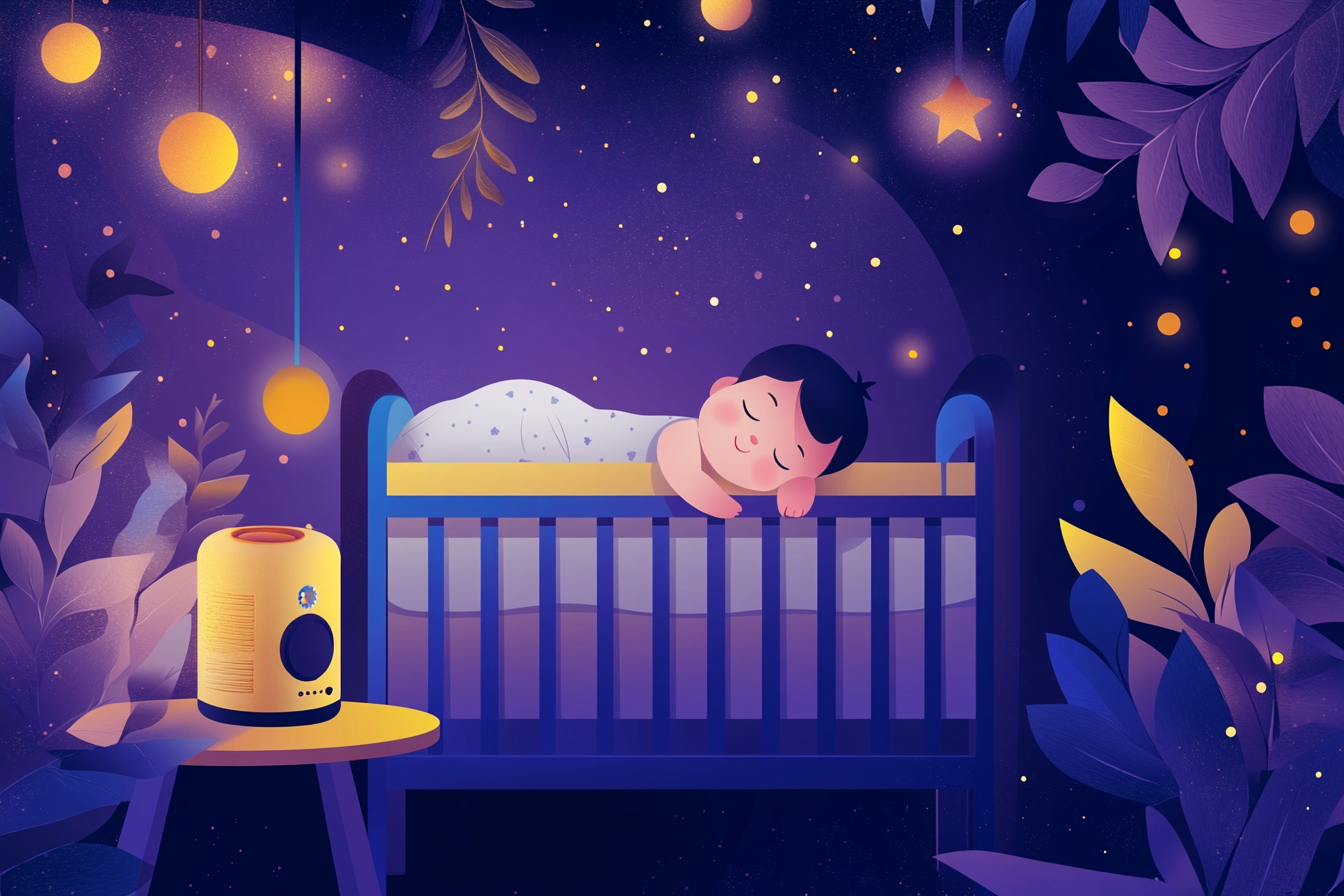Why White Noise Works for Newborns
Remember those nine months your baby spent in the womb? It wasn’t exactly quiet in there. The whooshing sounds of blood flow and muffled external noises created a constant ambient sound level of about 75-85 decibels. This explains why many newborns find white noise incredibly soothing – it reminds them of their prenatal environment.
The Science Behind White Noise and Baby Sleep
When your baby sleeps, their brain processes various environmental sounds. White noise works by:
- Creating a consistent sound barrier that masks sudden noises
- Activating the calming reflex in newborns
- Helping establish sleep associations that signal it’s time to rest
Research published in the Journal of Pediatrics suggests that white noise can help babies fall asleep up to 80% faster than those who sleep in silence.
Choosing the Right White Noise for Your Baby
Not all white noise is created equal. The best options include:
- Pure white noise (similar to radio static)
- Pink noise (deeper than white noise, like steady rainfall)
- Brown noise (even deeper, like ocean waves)
- Womb sounds (recreated ambient sounds from pregnancy)
Safe White Noise Practices
Safety should always come first when using white noise for your baby:
- Keep the volume at or below 50 decibels (about the level of a quiet conversation)
- Position the sound machine at least 7 feet away from your baby’s sleeping area
- Never place the device inside or attached to the crib
- Use a timer to automatically shut off the sound after baby is deeply asleep
Implementing White Noise in Your Baby’s Sleep Routine
Creating a consistent sleep routine helps your baby recognize sleep cues. Here’s how to incorporate white noise effectively:
- Start white noise before laying your baby down
- Use it consistently for all sleep periods (naps and nighttime)
- Combine it with other sleep cues like dimming lights and swaddling
- Keep the sound playing throughout the entire sleep period
Common Concerns About White Noise
1. Dependency
Many parents worry about creating a dependency on white noise. While babies may associate it with sleep, this isn’t necessarily negative. Sleep associations are normal and can be gradually modified as your child grows.
2. Hearing Development
When used at appropriate volumes and distances, white noise poses no risk to your baby’s hearing development. However, always follow safety guidelines and consult your pediatrician if you have concerns.
Tips for Success
To maximize the benefits of white noise for your newborn:
- Be consistent with usage
- Find the right volume level through trial and error
- Use a high-quality sound machine with multiple sound options
- Keep backup batteries or a portable option for travel
- Consider a machine with wireless controls for easy adjustments
When to Start and Stop Using White Noise
You can begin using white noise from day one, as it’s safe for newborns when properly implemented. As for stopping, there’s no set timeline – some families use it through the toddler years and beyond, while others gradually phase it out after the first year.
Troubleshooting Common Issues
If white noise isn’t working as expected:
- Try different types of sounds
- Adjust the volume level
- Check the distance from your baby
- Ensure other sleep fundamentals are in place
- Consider your timing and sleep routine
Conclusion
White noise can be a valuable tool in your baby sleep arsenal, providing comfort and promoting better sleep patterns for your newborn. Remember that every baby is unique, so what works for one may not work for another. Stay consistent, follow safety guidelines, and adjust your approach based on your baby’s responses.
This article is for informational purposes only and should not replace professional medical advice. Always consult with your pediatrician about your baby’s sleep routine and any concerns you may have.



One response to “White Noise for Newborn Sleep: A Complete Parent’s Guide”
Hi, this is a comment.
To get started with moderating, editing, and deleting comments, please visit the Comments screen in the dashboard.
Commenter avatars come from Gravatar.